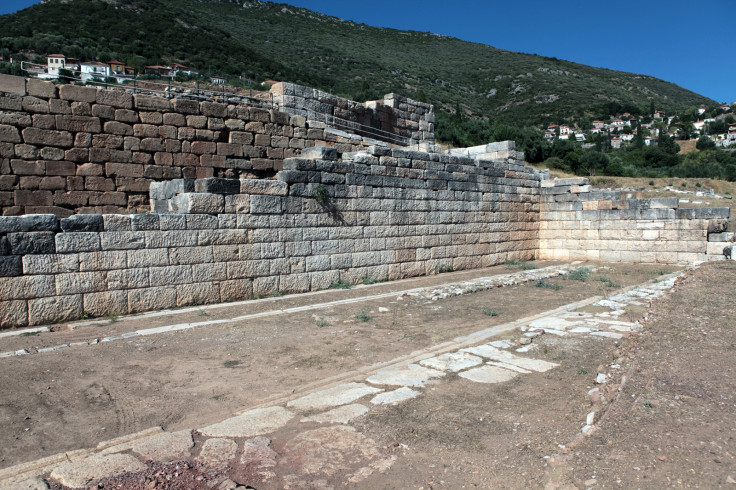Dramatic discovery reveals secrets of 2,000-year-old lines in the ground at Ancient Greek theatre
Archaeologists think they have solved a long-standing mystery dating back to the Greek Classical period.
A series of rows carved into stone next to ancient theatres in Greece have defied explanation for years. Now archaeologists think they have discovered the role they played in theatrical productions more than 2,000 years ago.
Drama was an integral part of Ancient Greek life. Simple, open-air theatres were common from about 300 BCE. They gradually developed into more elaborate and grand structures in the following centuries. Under Roman influence theatres gradually became the permanent buildings with an indoor stage and auditorium that we are now familiar with, more than 2,000 years later.
Stone lines carved into stone at a theatre in Messene are about 9 to 12 cm wide and 3.8 to 5.4 cm deep. They are almost completely level throughout their length. Similar lines have also been found at theatres of a comparable age in Sparta and Megalopolis.
A new interpretation by researchers from Kumamoto University, Japan, has suggested that two crucial stage structures were wheeled on separately using the lines. They also hypothesise that there was a fourth line that has since been lost.
"It may be hypothesised that there is an additional stone line in both theatres, although no remains are currently left, and the proskenion and skene each had wheeled stage devices supported by two wheels on a single shaft," the authors write in a study published in the German journal Archäologischen Anzeigers.
The mobile devices these lines transported were the skene, or painted backdrop that went behind the actors, and the proskenion, a narrow, tunnel-like structure placed in front of the stage.
"A large force would have been required to move stage equipment as large as the proskenion and skene," archaeologist Ryuichi Yoshitake of Kumamoto University, who led the research, said in a statement.
"In previous studies, there was a theory that the proskenion and skene were simultaneously moved along just three stone rows, but I think it is more logical that the proskenion and skene each had their own set of two stone rows to move along."

The skene and the proskenion would not have been easy to manoeuvre. They were both about 30 metres long and several metres high. As the structures were made of wood, they would have taken significant labour to move.
"I came to this conclusion due to the positions of three stone rows and the fact that it would have been quite difficult to move the heavy proskenion and skene together using a single axle with three wooden wheels," said Yoshitake.
These Ancient Greek inventions fed into the Roman adaptation of Greek theatres, and still have an influence on design of stages today. In modern theatre, the structure above traditional stages is known as the 'proscenium arch'.
But the mystery of the lines is not an entirely closed book. There is still the problem of the fourth line, which is missing at all three theatres. It could simply be that they did not survive the 2,000 years since it was last used, or it could be that the lines had an entirely different purpose, which has not yet been discovered. Further research will be needed to reveal the details of how these ancient theatres worked.

© Copyright IBTimes 2025. All rights reserved.






















